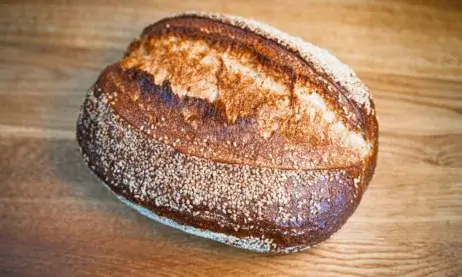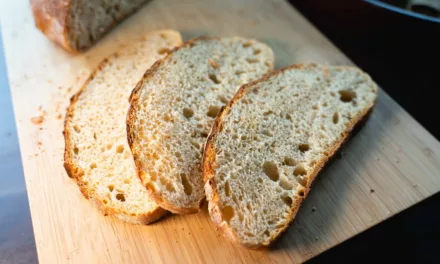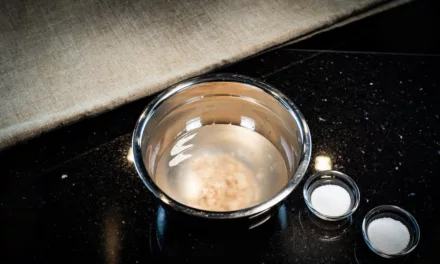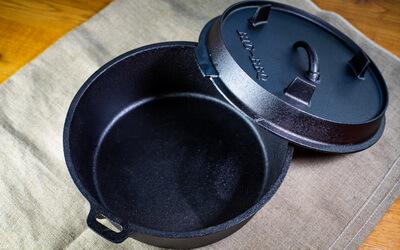Unleash your inner baker with my comprehensive guide to sourdough! This ancient art of baking is about to become your new favorite hobby.
Are you tired of store-bought bread that lacks flavor and texture? Sourdough could be the answer you’ve been looking for. This timeless classic, dating back to ancient Egypt, offers a unique tangy flavor and a satisfying chewy texture that’s hard to resist.
As a seasoned baker and sourdough enthusiast, I’ve spent years perfecting the art of sourdough baking. From creating the perfect starter to baking a loaf that’s just right, I’ve experienced it all. Now, I’m here to share my knowledge and passion with you.
Ready to dive into the world of sourdough? Stick around, because we’re about to embark on a journey that will transform your baking skills and delight your taste buds!
Table of Contents
- Sourdough: A Timeless Classic
- The Art and Science of Sourdough
- Sourdough: A Healthier Bread Choice
- Crafting Your Own Sourdough Starter
- Ingredients Needed for a Sourdough Starter
- Step-by-Step Guide to Creating a Sourdough Starter
- Maintaining and Storing Your Sourdough Starter
- Sourdough Starter Smell: Good vs Bad
- Your First Sourdough Bread: A Step-by-Step Guide
- Essential Tools for Baking Sourdough Bread
- A Simple Sourdough Bread Recipe for Beginners
- Conclusion
- The Joy of Baking Sourdough Bread
- Further Resources for Sourdough Enthusiasts
- Frequently Asked Questions (FAQ)
Sourdough: A Timeless Classic
Sourdough isn’t just a type of bread – it’s a culinary heritage that dates back to ancient Egypt. Made from a fermented mixture of flour and water, known as a “starter”, sourdough is a testament to the beauty of simplicity. This starter is a bustling microcosm of naturally occurring yeast and bacteria, which are responsible for the unique tangy flavor and chewy texture that sourdough is celebrated for.
The Art and Science of Sourdough
Baking sourdough is where art meets science. When flour and water come together, the yeast and bacteria present in the flour start a fermentation process, consuming the sugars and producing carbon dioxide, ethanol, and lactic acid. The carbon dioxide is what makes the dough rise, while the ethanol and lactic acid contribute to the distinctive tangy flavor that sourdough lovers can’t get enough of.
Sourdough: A Healthier Bread Choice
Not only is sourdough delicious, but it’s also often easier to digest than bread made with commercial yeast. The long fermentation process helps break down the proteins and gluten in the flour, making it more digestible and less likely to cause food intolerance. Plus, sourdough bread has a lower glycemic index than many other types of bread, so it won’t cause a rapid spike in your blood sugar levels.
Crafting Your Own Sourdough Starter
Ingredients Needed for a Sourdough Starter
Creating your own sourdough starter is a simple yet rewarding process that requires only two ingredients: flour and water. It’s best to use unbleached, all-purpose flour or a mix of all-purpose and whole grain flour. As for water, non-chlorinated water is preferred as chlorine can inhibit the growth of your yeast and bacteria.
Step-by-Step Guide to Creating a Sourdough Starter
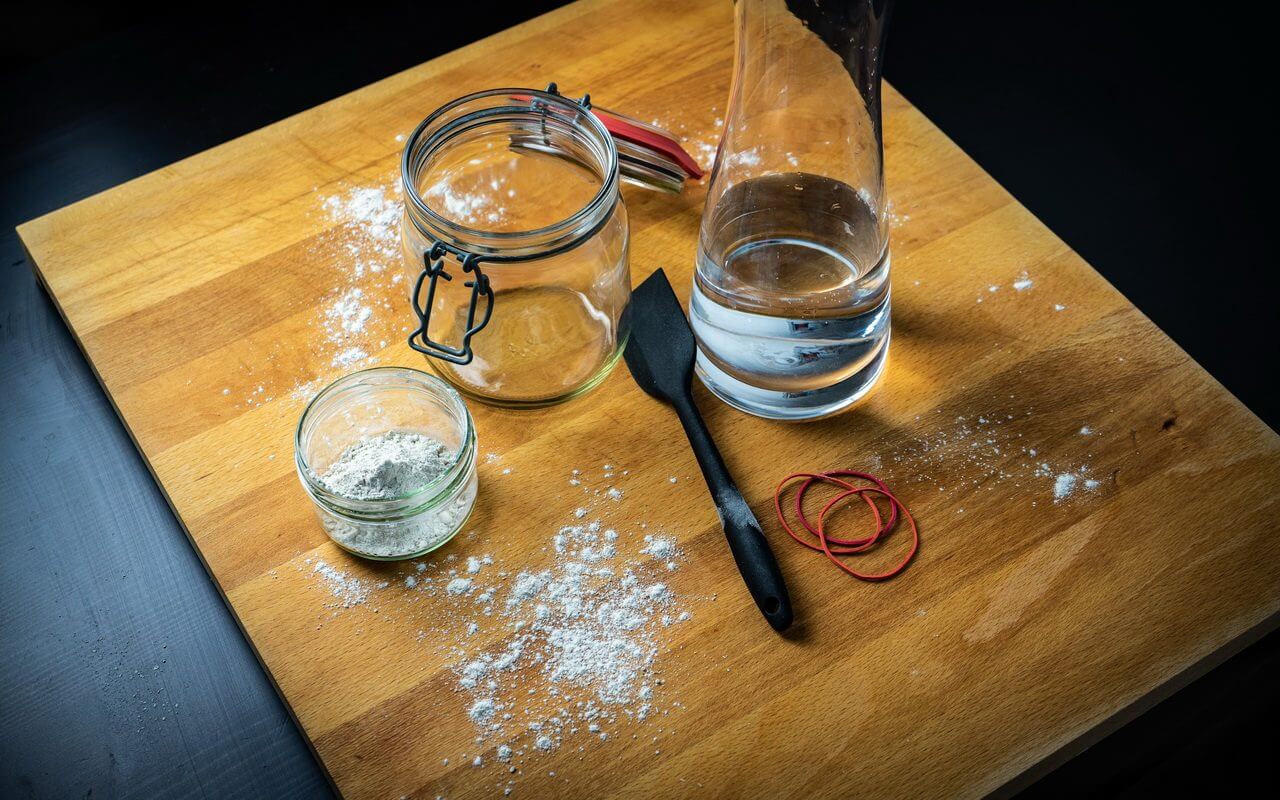
- Day 1: Mix 1/2 cup of flour with 1/3 cup of warm water in a large jar. Stir until smooth, then loosely cover the jar with a cloth and let it sit at room temperature.
- Day 2: You may see some bubbles, but if not, don’t worry. Add another 1/2 cup of flour and 1/3 cup of warm water to the jar. Stir well and let it sit at room temperature.
- Day 3-5: By now, you should see some activity in the form of bubbles. You should also start to smell a sour aroma. This is good! Each day, you’ll need to “feed” your starter by discarding half of it and then adding 1/2 cup of flour and 1/3 cup of warm water.
- Day 6: Your starter should be ready to use! It should have doubled in size and have a bubbly, frothy texture. If not, continue feeding it daily until it does.
Maintaining and Storing Your Sourdough Starter
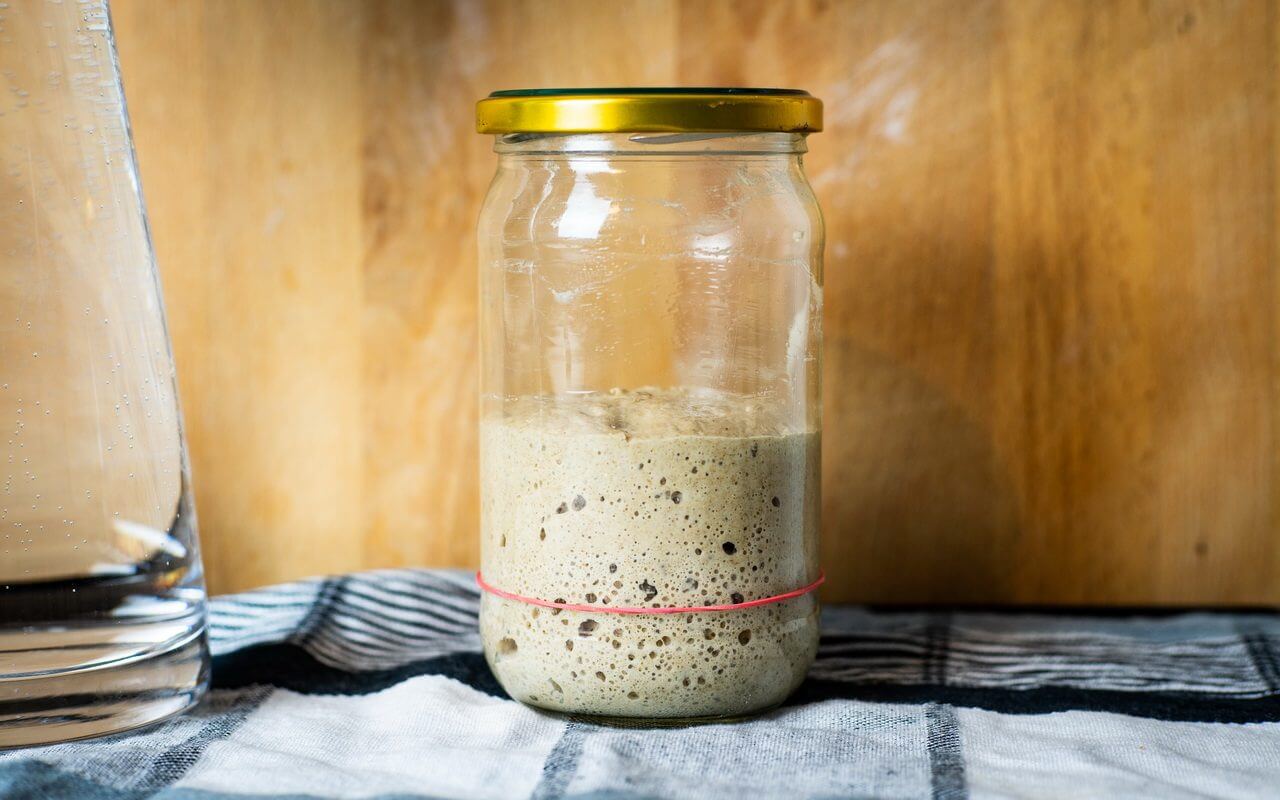
Maintaining your sourdough starter is straightforward. If you bake often, keep it on your kitchen counter and feed it daily. If you bake less, store the starter in the refrigerator and feed it once or twice a week.
Feeding involves discarding half of the starter and adding fresh flour and water to the remaining half. This keeps the yeast and bacteria healthy and active. Aim for a thick batter consistency for optimal fermentation.
Temperature is key. If you’re feeding your starter daily, a cooler room temperature (around 70°F or 21°C) is ideal. If you’re storing your starter in the refrigerator, allow it to sit at room temperature for a few hours after feeding before refrigerating it again.
Remember, a well-maintained sourdough starter is the foundation of great sourdough bread. For more details, have a look at my article about how to maintain a sourdough starter with a step by step guide and images.
Sourdough Smell: Good vs Bad
The smell of your sourdough starter is more than just a sensory experience – it’s a window into the health and readiness of your starter. A healthy sourdough starter typically has a pleasantly sour, yeasty aroma. This is a sign that the yeast and bacteria in your starter are active and ready to leaven your bread.
However, if your starter begins to emit a strong, unpleasant, or off smell, it may be a sign that something is amiss. An overly acidic or vinegary smell could indicate that your starter is hungry and needs to be fed more frequently. On the other hand, an aroma reminiscent of nail polish remover suggests that your starter may be overfed and that you might need to discard some before the next feeding.
Remember, your nose is a powerful tool in sourdough baking. By paying close attention to the smell of your starter, you can ensure that it’s in the best possible condition to give your sourdough bread that distinctive tangy flavor and chewy texture.
Your First Sourdough Bread: A Step-by-Step Guide
Essential Tools for Baking Sourdough Bread
Baking sourdough bread doesn’t require any special equipment. However, a few tools can make the process easier:
- Kitchen Scale: This is essential for accurate measurements.
- Dough Scraper: This helps with handling and shaping the dough.
- Banneton: This is a special basket for proofing the bread and giving it a beautiful shape and pattern.
- Dutch Oven: This creates the perfect environment for baking sourdough by trapping steam.
A Simple Sourdough Bread Recipe for Beginners

With your sourdough starter ready, you’re all set to bake your first loaf of sourdough bread. Here’s a simple recipe to guide you through the process:
- Mix the Dough: Combine 1 cup of active sourdough starter, 1.5 cups of warm water, and 4 cups of flour. Mix until you have a sticky dough.
- First Rise: Cover the dough and let it rise at room temperature until it doubles in size. This usually takes about 12 hours.
- Shape the Dough: Turn the dough onto a floured surface and shape it into a round loaf. Place the loaf into a well-floured banneton.
- Second Rise: Cover the banneton and let the dough rise again until it doubles in size. This usually takes about 2 hours.
- Bake the Bread: Preheat your oven and Dutch oven to 450 degrees F. Carefully turn the dough into the Dutch oven, make a few slashes on top with a sharp knife, cover, and bake for 30 minutes. Then, remove the lid and bake for another 15-20 minutes until the bread is golden brown and sounds hollow when tapped on the bottom.
You should have a look at our sourdough bread for beginners for a more detailed recipe with a thorough step by step approach including images.
Conclusion
The Joy of Baking Sourdough Bread
Baking sourdough bread is more than just a culinary activity – it’s a rewarding experience that connects you with the ancient tradition of bread baking. The smell of fresh-baked sourdough bread wafting through your kitchen is a sensory delight that’s hard to beat. So, embrace the joy of baking and let the sourdough journey begin!
Further Resources for Sourdough Enthusiasts
If you’re interested in learning more about sourdough baking, check out all the guides, blog posts and especially sourdough bread recipes I provide on Delight Baking.
Remember, the key to a successful sourdough journey is patience, practice, and persistence. Happy baking!
Frequently Asked Questions (FAQ)
Why is sourdough bread better for you?
Sourdough bread is often easier to digest than other types of bread due to the fermentation process. It also has a lower glycemic index, which means it won’t spike your blood sugar levels as much.
Is sourdough the healthiest bread?
While “healthiest” can be subjective and depends on individual dietary needs, sourdough is often considered one of the healthier bread options due to its natural ingredients and fermentation process.
What makes sourdough bread different?
Sourdough bread is unique because it’s made with a fermented starter instead of commercial yeast. This gives it a distinctive tangy flavor and a chewy texture.
Is sourdough better than flour?
Sourdough is a type of bread made from flour, so it’s not a matter of being “better” than flour. However, the fermentation process used in making sourdough can make it easier to digest and more nutritious than some other types of bread.
Is it OK to eat sourdough bread everyday?
As with any food, it’s important to enjoy sourdough bread as part of a balanced diet. If you enjoy it and it fits within your dietary needs, there’s no reason you can’t enjoy sourdough bread every day.
Is sourdough high in calories?
Sourdough bread isn’t significantly higher in calories than other types of bread. The exact calorie count can depend on the specific recipe and size of the slice.
What are the pros and cons of sourdough bread?
Pros of sourdough bread include its unique flavor, potential health benefits, and the satisfaction of baking it yourself. Cons can include the time and effort required to maintain a sourdough starter and bake the bread, as well as the potential for a sour flavor that some people may not enjoy.
Does sourdough have gluten?
Yes, unless it’s made with gluten-free flour, sourdough bread does contain gluten. However, the fermentation process can break down some of the gluten, making it easier to digest for some people.
Can you toast sourdough bread?
Absolutely! Toasting can enhance the flavor of sourdough bread and give it a delightful crunch.
Why is it called sourdough?
The name “sourdough” comes from the tangy, slightly sour flavor that results from the fermentation process.



